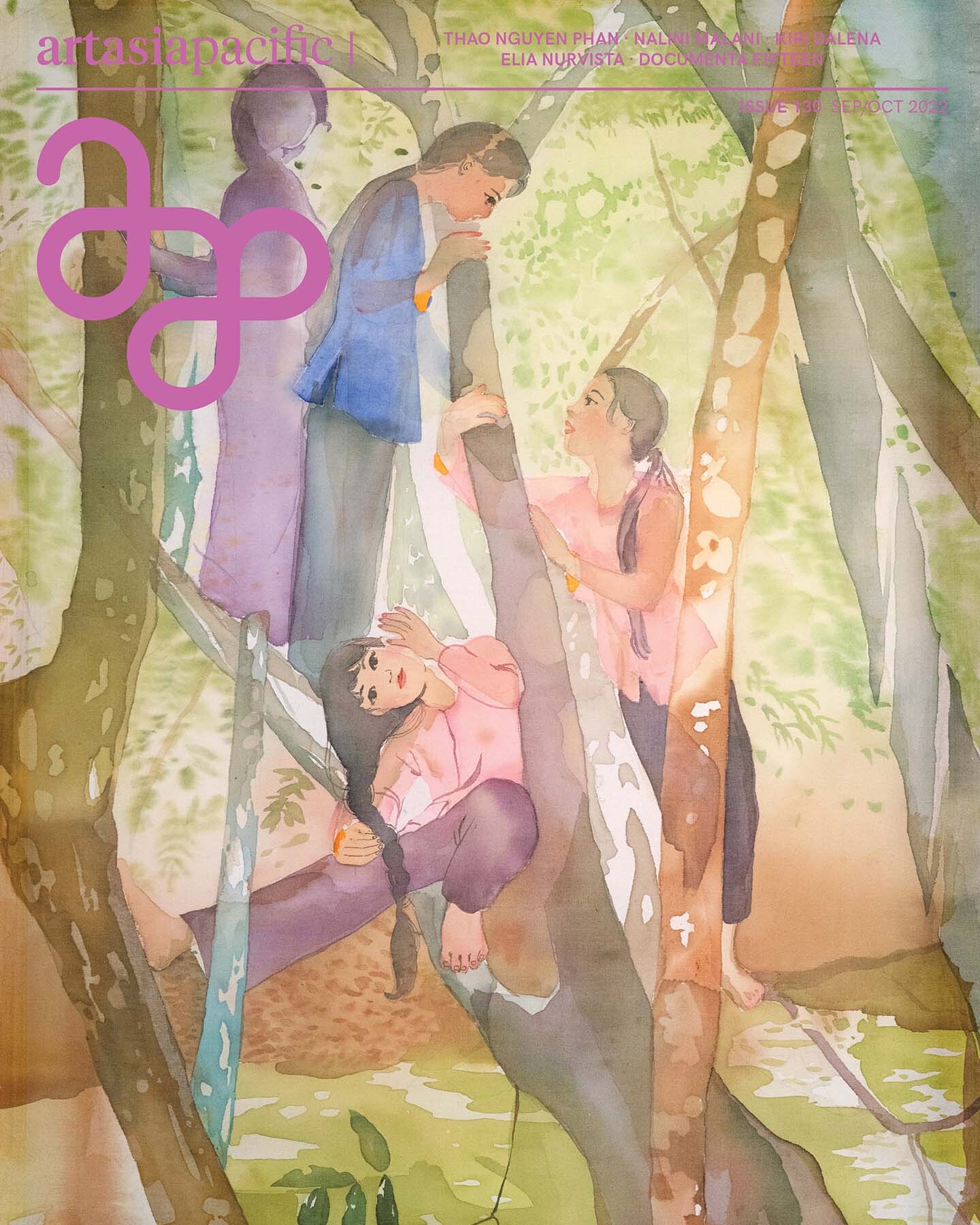Are there alternatives to fighting power with power? The simultaneously whimsical and disturbing images of our cover artist, Thao Nguyen Phan, suggest that there are. While Phan’s multimedia projects revisit dark chapters in Vietnam’s history—such as the romanization of the Vietnamese script, which razed a pillar of cultural identity, as well as the deadly famine during Japan’s occupation in 1945—she takes full artistic license to incorporate alternative accounts of these events. “I think folklores, oral histories, or just narratives in everyday life contain a higher level of truth. Even though they are full of fantasies, these are narratives in the collective consciousness of generations of people, unlike official histories, which are often written by a select few,” she tells associate editor Pamela Wong.
Similarly, in her moving-image works, Nalini Malani foregrounds the effects of war, violence, and the repression of women, while eschewing what she calls a “slogan-esque” approach. In the second feature, editor and publisher Elaine W. Ng speaks to the acclaimed multimedia and video artist about her solo exhibition “Vision in Motion” at M+ and her digital commissions for the Hong Kong museum.
The Features section continues with Up Close, where we examine four recent projects: Heidi Lau’s ceramic sculptures at the Green-Wood Cemetery in New York; Boo Sze Yang’s painting based on a photo of Hong Kong’s 2019 pro-democracy protests; Monique Yim’s performance Queer Series No. 16 (2021); and Serene Hui Sze Lok’s Gossip (2022) prints. For Inside Burger Collection, writer Lisa Movius considers the works of Song Dong in relationship to her experience of Shanghai’s recent draconian pandemic lockdown. Finding hope in projects from across Song’s career, Movius asserts: “Sometimes persistence is mightier than rage: sooner or later, walls still will fall.”
In Profiles, regular contributor Portia Placino turns the spotlight on artist-activist Kiri Dalena, whose videos tell the story of farmers and the victims of extrajudicial killings in the Philippines. Alongside her art, and despite the risks, Dalena persists with several nonprofit initiatives that directly assist those marginalized by society. In the second Profile, assistant editor Nicole M. Nepomuceno delves into Elia Nurvista’s practice, which is centered on the conversations and processes that unfold around meals—from the cultivation of ingredients to their preparation in dishes. While these participatory projects emphasize the immaterial over tangible, immutable outcomes, there is no denying that “the work lives on through the meaning it has imbued in its participants, the discussions that took place, and the relationships that were formed.”
Elsewhere in the issue, Imaad Majeed files a Dispatch from Colombo, where mass protests, initially sparked by rising living costs, continue to surge through the country with unprecedented support. Majeed offers insight into the upheaval through the music, poetry, and art that has been created in response. In the Point, former art professor Kurt Chan argues how the pandemic could be an opportunity for Hong Kong’s universities to revamp their methods for teaching visual arts. Where I Work visits the Geneva studio of Mai-Thu Perret, whose sculptures and paintings speak to the experiences of womanhood through allusions and references.
Last but not least, for One on One, artist Jakkai Siributr pays homage to the Gee’s Bend quilters, who use the quilt form to express their identity and experiences, in the face of the harrowing racism of the Deep American South. Like the creations of these quilters, Siributr’s own woven and stitched works at once offer comfort and point to societal schisms and unhealed traumas. Besides encouraging us to recognize the multivalent nature of our world, the artists of this issue affirm that there is a time to reflect and also a time to act.
A digital edition of the full issue is now available for purchase on Zinio, Google Play, iTunes, and Magzter.

